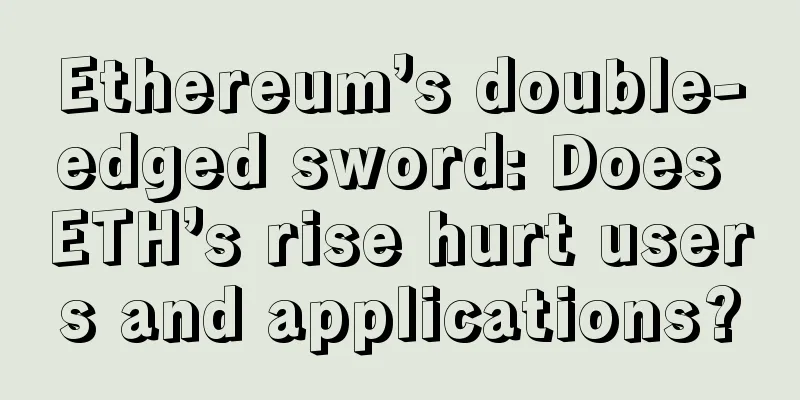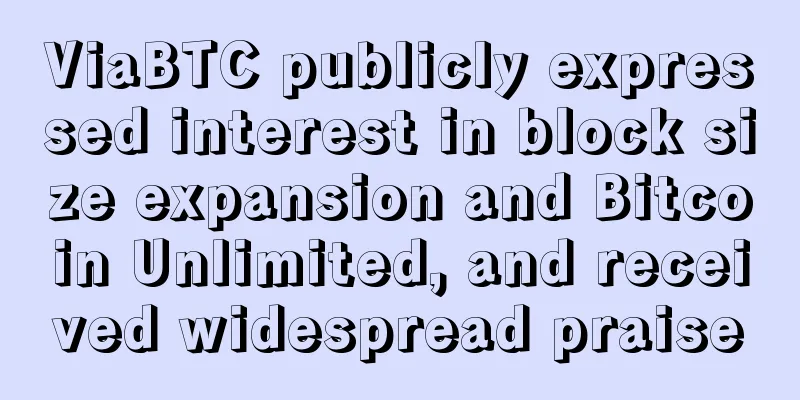Ethereum’s double-edged sword: Does ETH’s rise hurt users and applications?

|
Ethereum supporters have good reason to feel smug. Not only has Ethereum’s token ETH surged about 900% this year, but the public blockchain has also recently attracted attention from banks and tech giants. Ethereum supporters have long believed that the global computing platform will help form a new type of internet, and now a wave of innovators is trying to realize this ideal. However, the problem is that the rise in ETH prices and attention may have some disadvantages. That is, as the price of ETH rises, the cost of using Ethereum apps will also rise. This is because for the Ethereum platform, whether bidding on an Ethereum prediction platform or using new types of decentralized Twitter and Uber, users need to pay directly to use the Ethereum platform computing power. Currently, this is different from the situation of Facebook, which is famous for being "free". For example, Matus Lestan, co-founder of Ethereum app Ethlance, recently posted a screenshot from a user who was looking to create a user profile on the platform — which required the user to pay 0.08 ETH, or $7. The user wrote that when ETH was $10, he only had to pay “less than $1.” Regarding the rise in ETH prices, Luis Cuende, project lead at decentralized startup Aragon, told Coindesk:
Gas PriceMany Ethereum apps, including Aragon, are currently in beta, so it is unclear how many apps and users are affected by the rise in ETH. This could portend more friction in the future. For example, Augur co-founder Joey Krug said users of their ethereum-based platform were not affected.
To complicate matters further, gas prices are much more dynamic than simply being influenced by rising ETH prices. The details are a bit complicated. First, it’s important to point out that “gas,” “gas price,” and “gas cost” mean different things. (Even Ethereum’s inventor confuses these terms.) "Gas" is the unit of computing power in Ethereum, and "gas cost" is used to refer to the amount of gas required to perform actions on the platform. A simple transaction costs 500 gas, while the cost of storing data using Ethereum is 100 gas. These numbers are hard-coded into the software. Finally, the “gas price” is how much ETH each unit of gas costs. The total cost of executing an action on the Ethereum platform is equal to the "gas cost" multiplied by the "gas price". If the "gas price" remains unchanged and the ETH price increases, then at this time, the overall price of the smart contract will increase. For Ethereum, miners are responsible for setting gas prices. “Miners are the ones who call the shots,” said Jason Teutsch, founder of the TrueBit Foundation, a scalability project. Miner pressureSome people expect miners to lower gas prices. Some people think that the motivation for miners to do this is that if they don’t lower gas prices, fewer people will use the network and pay transaction fees. However, so far, miners have not lowered gas prices. Gas prices fluctuate at times, but have remained in a range of about 22-23 Gwei (0.000000000000000022 ETH or less than 1 cent) over the past year, according to a chart from Ethereum data site Etherscan. Teutsch said:
So if miners lowered their fees, then this situation could be alleviated. Indeed, some users are currently lobbying mining pools to push for lower gas prices. Even more confusing, according to Krug, is that users can post transactions with fees lower than the hard-coded price. Transactions may not go through as quickly, but he noted that even at 20 times the current price, "transactions won't actually be that slow." The problem is that most users just follow the hard-coded price. Given this, there is even less reason to worry about price increases. Because the blocks are not currently full, in fact many blocks are still empty, and users do not need to increase the transaction fee to get their transactions into the blocks. Krug said:
He said that “a lot of this is due to inaction by developers” who are working to introduce a more dynamic gas price that depends in part on how full the blocks are. In the longer term, there are other limitations on public blockchains. For example, Ethereum has a limit on the computational power of each block. This limit is roughly equivalent to the block size of Bitcoin, except that Ethereum miners can increase or decrease this limit. Why not simply lower the gas price and increase the amount of gas that can fit in each block? Well, there is a trade-off: raising the gas limit will increase the burden of running an Ethereum full node. Dealing with these trade-offs has long been an issue for Bitcoin. In a sense, it’s a big element of the block size debate, which has been going on in the Bitcoin community around increasing transaction fees. In other words, a lower gas limit is necessary for Ethereum to remain decentralized, but in the long run, as more people use the Ethereum platform, this may lead to higher prices for smart contracts. SolutionYou might think, then, that these price increases are a symptom of blockchain scalability issues, and that some projects might be able to help address them. One of those projects is TrueBit, which is pushing Ethereum smart contract computational verification into a new layer on the blockchain, such as more advanced computations like machine learning. “TrueBit is immune to some of these issues,” Teutsch said, arguing that the platform could help increase transaction throughput and enable more advanced ethereum computing. What does this mean in this context? The idea is that you don’t need to solve a lot of computations directly on the blockchain. You still have to pay the computer on the TrueBit market, but the idea is that you don’t have to pay the more expensive on-chain transaction settlement fees. Gilles Fedak, co-founder of the distributed cloud computing app IEx.ec, pointed out that although their applications are now mainly off-chain, the team behind the computing platform is looking for another off-chain network, Raiden, to help solve some of their problems. In another direction, Cuende said Aragon’s business model could serve as an inspiration for other decentralized apps. The startup plans to pay transaction fees on the platform, insulating users from rising coin prices. However, all of these projects are still in the development stage. Before these projects mature, or before miners adopt the new fee results, Ethereum smart contract fees may rise. Somewhat ironically, Ethereum founder Vitalik Buterin once believed that Bitcoin transaction fees were too high. |
>>: Showing off his Bitcoin hardware wallet, is the new French president a bitcoiner?
Recommend
What are the facial features that indicate that money is becoming more and more available? Double eyelids and collapsed nose
When facing life, becoming richer and richer is n...
A straight face is a sign of nobility.
In physiognomy, a person's face is divided in...
Is the marriage of a man with a broken palm good? Is it true that he will bring bad luck to his wife?
Generally speaking, we always accuse a woman of b...
Market Analysis: BTC's total network computing power is about to reach a historical high. Can the market still sprint upward?
With the rapid rise in BTC prices, the payback pe...
How to resolve bad luck on your face
How to resolve bad luck on your face 1. Black for...
Bitcoin Wallet Platform BTC.com Partners with Kraken to Allow Users to Buy Bitcoin Directly from It
Golden Finance News - BTC.com, a popular Bitcoin ...
Research: Bitcoin mining fee income exceeds other currencies by 8 times
Data rankings on May 10 showed that the Bitcoin n...
A woman's sunken cheeks indicate hard work and fatigue
A face with sunken cheeks is usually not a good f...
The temperament and destiny of people with straight teeth
Everyone desires to have a set of neat and beauti...
HaoBTC Bitcoin Daily Interpretation: Approaching Direction Selection Point
Fundamental news: 1. CME Group will launch formal...
The old saying about birthmarks on feet
The location of each person's birthmark is di...
Palmistry diagram of the hand
The palm lineage of the hand with a through-hole ...
How to read triangular eyes
Triangular eyes are a common physiological phenom...
Why is it bad to have a woman without a chin?
The chin is also an important part of our face. T...
The fortune of a person can be seen from the feet
The fortune of a person can be seen from the feet...









